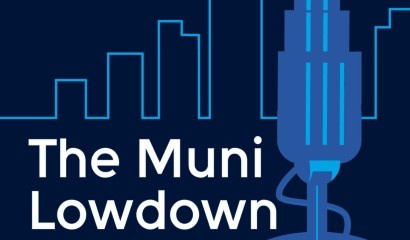Azul Special Credit Report – Do something about leasing costs
On 25 January 2024, we published a brief report comparing operating leasing costs among airlines in Latin America, with a focus on whether Gol would request bankruptcy (eventually it did). The conclusion was that Gol had the second largest operating lease costs among the top four airlines, after Azul.
Fast forward to today, and we see that costs have gone up for all airlines. In the case of Avianca, LATAM and Azul (the first two of these have been through Chapter 11s) by USD ~60,000 a month, while Gol’s have increased by USD ~34,000. It’s hard to understand what happened with Gol. Maybe the lower increase corresponds to having filed for Chapter 11 and having told lessors “this is as much as I can pay,” or if the increase was the genuine increase it had.
In our opinion, the problem with Azul is not the increase per se, but the high starting point, of USD ~306,000, versus USD ~203,000 for Avianca and USD ~221,000 for LATAM (See Table 1).
We would also like to examine some issues such as the M&A possibility for Gol and Azul, and how Gol is doing in terms of ASKs after having filed (relative to Azul and LATAM).
POSSIBLE MERGER WITH GOL
There have been a lot of rumors about a potential merger between Azul and Gol. The idea of creating a super-giant Brazilian airline company is very appealing, especially for two airlines with financial difficulties, with the hope of easily achieved synergies (stronger negotiating power with lessors, reductions in SG&A and headcount). The relevant question, assuming the parties agree on pricing and other financial details, is “will the regulator allow further consolidation in the market?”
The latest significant M&A attempt in Brazil was in 2018, when Ocean Air (Avianca Brasil) filed for bankruptcy. At the time, regulator CADE unilaterally expressed its concern on a transaction where LATAM or Gol could acquire Avianca Brasil. Looking at data for that year, we see that in the domestic market, the top four players also had over 99% market share, with Gol having 36%, LATAM 31.8%, Azul 18.7% and Avianca Brasil 12.9% (See Table 2). At present, it is evident that basically all Avianca Brasil slots were given to Azul, and now we have three companies with market share split …/…/… (See Table 4 below).
A merger between Gol and Azul would create a company that controls …% of the domestic market. It is true that the regulator could make the new company drop some routes for LATAM to acquire to create more competition, but this would just benefit the Chile-based company.
If the regulator was concerned with a firm having significantly more than 40% share in the domestic market in 2018, why would now be any different? The only answer we can find is the fear that a liquidation would put jobs at risk and create chaos in the space, which we don’t think is a strong argument because the remaining players (unless it’s only LATAM) would pick up the employees left over from the liquidating company.
Another angle for analyzing a potential merger is the fleet structure. In the last few years, we’ve seen most airlines trying to homogenize fleets, as this offers benefits that are very tangible and quickly achieved. These include better parts and repairs management, cheaper maintenance, lower training costs for pilots as they have to learn how to fly a narrower variety of planes, better bargaining power with lessors.
Well, the fleets of Azul and Gol couldn’t be more different. Gol has its entire fleet composed of …, while Azul, with its “connect Brazil” moto, operates five different “types” of planes: Airbus widebodies, Airbus narrowbodies, Embraers, ATRs and Cessnas. Unless we can make all Gol’s airplanes switch to Airbus and Embraer, the new merged airlines would face the problem of having too many different types of planes, with the associated costs. It’s not an irremediable problem, but if we are thinking about a new company that will be better (meaning simpler), the two fleets are not a good marriage (See Table 3).
CHAPTER 11 WASN’T COST-FREE FOR GOL
Filing for Chapter 11 is never free, but in Gol’s case, it took a significant toll in terms of passenger capacity. According to ANAC data, in 9M24 domestic ASK was 90.8 billion, up merely 2.4% from the same period last year. However, while LATAM and Azul increased their ASK by 5.9% (to 35.2 billion) and 6.8% (to 27.4 billion), respectively, Gol saw a 5.2% decline to 27.6 billion. Interestingly, during the first nine months of 2023 Gol’s ASK was 3.4 billion more than Azul, while in the same period of this year this difference is just 0.2 billion.
When we look at RPKs, Gol’s decline is similar. Their total RPKs dropped 4.7% in the domestic market and 3.6% overall (See Tables 4 and 5).
We can also see the relative outperformance of Azul in the cumulative ASK and RPK figures. While we see in both cases that the blue dotted line, representing 2023, shows a consistent widening versus the light blue straight line, representing 2024 (See Figures 1 and 2).




















